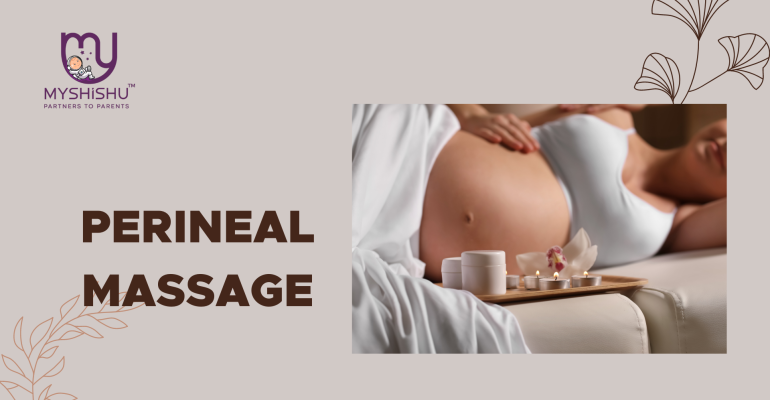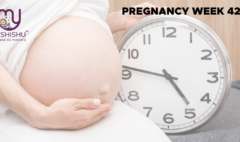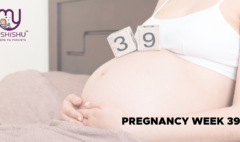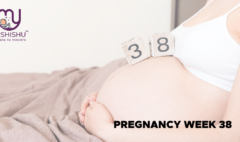Perineal Massage During Pregnancy: A Comprehensive Guide
Perineal Massage During Pregnancy: A Comprehensive Guide
Introduction
One practice gaining attention in the realm of prenatal care is perineal massage during pregnancy. As expectant mothers prepare for childbirth, many are keen to explore ways to ease the birthing process and reduce the risk of complications. While the thought of massage may conjure images of relaxation and pampering, perineal massage during pregnancy serves a distinct purpose: to prepare the perineum—the area between the vagina and the anus—for the physical demands of childbirth. In this comprehensive guide, we delve into the world of perineal massage during pregnancy, exploring its benefits, techniques, and considerations to help mothers-to-be make informed decisions about their prenatal care.
Pregnancy brings with it a myriad of changes to a woman’s body, including the stretching and softening of tissues in the pelvic region in preparation for labor and delivery. However, this natural process can also increase the likelihood of perineal trauma during childbirth, such as tears or episiotomies. Perineal massage during pregnancy offers a proactive approach to address this concern, aiming to promote flexibility and elasticity in the perineal tissues, potentially reducing the risk of tearing and the need for medical interventions during delivery.
As we navigate the intricacies of perineal massage during pregnancy, we’ll explore its potential benefits, evidence-based recommendations, and practical tips for incorporating it into your prenatal routine. Join us on this journey as we empower mothers-to-be with the knowledge and tools to support a positive birthing experience.
Table of Contents
Benefits of Perineal Massage During Pregnancy
- Reduced Risk of Perineal Trauma: One of the primary benefits of perineal massage during pregnancy is its potential to reduce the risk of perineal trauma during childbirth. By gently stretching and massaging the perineal tissues, expectant mothers may enhance their flexibility and elasticity, making them more resilient to the pressures of labor and delivery. Studies have suggested that regular perineal massage during pregnancy in the weeks leading up to childbirth can significantly decrease the likelihood of perineal tears and episiotomies, which are surgical incisions made to enlarge the vaginal opening during delivery.
- Increased Comfort During Childbirth: Another advantage of perineal massage during pregnancy is its ability to increase comfort and confidence during childbirth. As women become more familiar with the sensations of stretching and pressure in the perineal area through regular massage, they may experience reduced anxiety and fear surrounding the birthing process. This can contribute to a more positive childbirth experience, empowering women to trust in their bodies’ ability to birth their babies naturally.
- Enhanced Postpartum Recovery: Beyond its benefits for childbirth, perineal massage during pregnancy may also support postpartum recovery. By promoting flexibility and blood flow to the perineal tissues, massage can aid in healing any perineal trauma that may occur during delivery. Additionally, women who undergo perineal massage during pregnancy may experience less discomfort and pain in the postpartum period, allowing them to focus on bonding with their newborns and adjusting to motherhood.
- Improved Pelvic Floor Function: Perineal massage during pregnancy can also have positive effects on pelvic floor function. The pelvic floor muscles play a crucial role in supporting the pelvic organs, controlling bladder and bowel function, and facilitating sexual sensation. By incorporating perineal massage during pregnancy into their prenatal routine, women may strengthen and tone the pelvic floor muscles, reducing the risk of pelvic floor dysfunction and urinary incontinence both during and after pregnancy.
Overall, the benefits of perineal massage during pregnancy extend beyond childbirth preparation to encompass improved comfort, confidence, and pelvic floor function throughout the prenatal and postpartum periods. As expectant mothers explore their options for prenatal care, perineal massage during pregnancy offers a safe, natural, and empowering approach to support a positive birthing experience and enhance overall well-being.
How to Perform Perineal Massage During Pregnancy
- Choose a Comfortable Position: Begin by finding a comfortable position that allows easy access to the perineal area. This could be sitting on the edge of a chair, propped up with pillows in a semi-reclined position, or lying on your side with knees bent.
- Gather Supplies: Before starting the massage, gather supplies such as a water-soluble lubricant or natural oil like vitamin E oil or olive oil. Make sure your hands are clean to avoid introducing any bacteria into the vaginal area.
- Relax and Breathe: Take a few deep breaths to relax your body and mind. Relaxation is essential for allowing the perineal muscles to soften and stretch more easily during the massage.
- Apply Lubricant: Apply a small amount of lubricant to your thumbs and the perineal area. Start with about a teaspoon of lubricant and add more as needed to keep the area slippery.
- Insert Thumbs: Gently insert your thumbs into the vagina, about 1 to 1.5 inches deep. You should feel the perineal tissues between your thumbs and the vaginal wall.
- Massage Movements: Once your thumbs are in position, press downwards and outwards towards the sides of the perineum. Use a U-shaped or J-shaped motion to stretch the tissues. Apply gentle but firm pressure and avoid any pain or discomfort.
- Repeat Strokes: Continue the massage for about 5-10 minutes, focusing on stretching and relaxing the perineal tissues. You can gradually increase the pressure as tolerated but be mindful not to overdo it.
- Relaxation: After completing the massage, take a moment to relax and breathe deeply. You can also use this time to practice relaxation techniques such as deep breathing or visualization to further release tension in the pelvic area.
- Clean Up: Once you’re finished, wash your hands thoroughly with soap and warm water. You can also clean the perineal area with a warm, damp cloth if desired.
- Frequency: Aim to perform perineal massage 1-2 times per day, starting around 34-36 weeks of pregnancy. Consistency is key, so try to make it a regular part of your prenatal routine to reap the maximum benefits.
Potential Challenges and Considerations
When considering perineal massage during pregnancy, it’s essential to be aware of potential challenges and considerations to ensure a safe and effective experience:
- Discomfort or Sensitivity: Some individuals may find perineal massage uncomfortable or sensitive, particularly if they have pelvic floor dysfunction or other underlying medical conditions. It’s crucial to listen to your body and adjust the pressure or technique accordingly to avoid exacerbating any discomfort.
- Emotional Response: Engaging in perineal massage may evoke emotional responses related to childbirth, such as anxiety, fear, or vulnerability. It’s normal to experience these emotions, but it’s essential to communicate openly with your partner or healthcare provider if you’re feeling overwhelmed or distressed.
- Physical Limitations: Certain physical limitations, such as mobility issues or difficulty reaching the perineal area, may make it challenging to perform perineal massage independently. In such cases, seeking assistance from a partner, doula, or healthcare provider may be necessary.
- Time and Commitment: Perineal massage requires time and commitment to incorporate into your prenatal routine. Finding dedicated time for massage sessions amidst other responsibilities may be challenging, but prioritizing self-care and childbirth preparation can offer long-term benefits.
- Medical Considerations: Individuals with certain medical conditions or pregnancy complications, such as vaginal infections, placenta previa, or a history of preterm labor, should consult with their healthcare provider before initiating perineal massage. In some cases, perineal massage may not be recommended or may require modifications to ensure safety.
- Cultural and Personal Factors: Cultural beliefs and personal preferences may influence one’s comfort level with perineal massage. It’s essential to respect individual boundaries and choices regarding prenatal practices and childbirth preparation.
Despite these potential challenges, perineal massage can be a valuable tool for promoting perineal health and preparing for childbirth. Open communication with healthcare providers, flexibility in approach, and prioritizing self-care can help individuals navigate any obstacles they may encounter during the perineal massage process.

Incorporating Perineal Massage in Your Prenatal Routine
- Schedule Regular Sessions: Set aside time in your daily or weekly schedule specifically for perineal massage. Consistency is key for reaping the benefits, so aim to practice it regularly.
- Choose a Relaxing Environment: Find a quiet and comfortable space where you can perform the massage without interruptions. Dim the lights, play soothing music, or incorporate other relaxation techniques to create a calming atmosphere.
- Involve Your Partner: If you feel comfortable, consider involving your partner in the perineal massage process. They can assist with applying lubricant, providing emotional support, or even performing the massage under your guidance.
- Combine with Other Self-Care Practices: Perineal massage can be combined with other self-care practices such as prenatal yoga, meditation, or warm baths. Integrating these activities into your routine can enhance relaxation and overall well-being during pregnancy.
- Listen to Your Body: Pay attention to how your body responds during perineal massage. If you experience discomfort or pain, adjust the pressure or technique accordingly. It’s important to prioritize your comfort and well-being throughout the massage.
- Stay Consistent: As your due date approaches, make perineal massage a consistent part of your prenatal routine. Regular practice can help prepare your body for childbirth and potentially reduce the risk of perineal trauma during delivery.
- Seek Professional Guidance: If you have any concerns or questions about perineal massage, don’t hesitate to consult with your healthcare provider or a qualified prenatal care provider. They can offer personalized guidance and address any specific needs or considerations based on your individual circumstances.
- Be Patient and Persistent: Perineal massage may feel unfamiliar or awkward at first, but with practice, it can become more comfortable and routine. Stay patient and persistent and remember that you’re taking proactive steps to support your body during pregnancy and childbirth.
Alternative Approaches of Perineal Massage
- Yoni Eggs or Ben Wa Balls: Some women opt for using yoni eggs or Ben Wa balls as an alternative method to perineal massage. These small, smooth stones or balls are inserted into the vagina and can help strengthen pelvic floor muscles through exercises such as Kegels. While they may offer benefits for pelvic floor health, it’s essential to consult with a healthcare provider before using them, especially during pregnancy.
- Pelvic Floor Physical Therapy: Pelvic floor physical therapy involves working with a specialized therapist to address pelvic floor dysfunction, including issues related to muscle tension, weakness, or pain. These therapists can provide personalized exercises, manual techniques, and education to help improve pelvic floor function and alleviate discomfort during pregnancy and postpartum recovery.
- Acupuncture and Acupressure: Acupuncture and acupressure are traditional Chinese medicine practices that involve stimulating specific points on the body to promote balance and alleviate various symptoms. Some pregnant women find relief from perineal discomfort or pelvic pain through acupuncture or acupressure sessions performed by trained practitioners. However, it’s crucial to consult with a qualified provider experienced in prenatal care before pursuing these treatments.
- Herbal Remedies: Certain herbal remedies, such as sitz baths with soothing herbs or topical applications of herbal salves, are sometimes used to relieve perineal discomfort during pregnancy and postpartum. However, it’s essential to approach herbal remedies with caution during pregnancy, as some herbs may not be safe for use during this time. Always consult with a healthcare provider or qualified herbalist before using herbal products, especially during pregnancy.
- Breathing and Relaxation Techniques: Incorporating breathing exercises, mindfulness practices, or relaxation techniques into your daily routine can help manage perineal discomfort and promote overall well-being during pregnancy. Deep breathing exercises, guided imagery, or progressive muscle relaxation can help reduce tension in the pelvic floor muscles and alleviate discomfort. Additionally, prenatal yoga classes often incorporate these techniques, providing a safe and supportive environment for pregnant women to practice relaxation and stress reduction.
Research and Evidence
Research and evidence on perineal massage during pregnancy provide valuable insights into its potential benefits and effectiveness in reducing the risk of perineal trauma during childbirth. Numerous studies have suggested that perineal massage, when performed during the final weeks of pregnancy, may decrease the incidence of perineal trauma requiring stitches or episiotomy. This practice is particularly relevant for first-time mothers, as research published in the Cochrane Database of Systematic Reviews indicates that perineal massage may significantly reduce the likelihood of perineal trauma, thereby promoting better maternal outcomes.
Moreover, perineal massage has been shown to improve perineal tissue flexibility and elasticity, which can contribute to smoother childbirth experiences. By regularly massaging the perineum, pregnant individuals can stretch and relax the muscles and tissues in the area, enhancing their ability to withstand the stretching forces of childbirth. This increased elasticity not only reduces the likelihood of perineal trauma but also enhances maternal comfort during delivery. As a result, women who practice perineal massage during pregnancy may report higher levels of satisfaction with their childbirth experiences, feeling more empowered and in control throughout the process.
Furthermore, perineal massage may offer benefits beyond childbirth, extending into the postpartum period. By promoting perineal tissue health and integrity, prenatal perineal massage may contribute to faster healing and reduced discomfort after childbirth. This holistic approach to perineal care underscores the importance of incorporating perineal massage into prenatal routines as a proactive measure to support overall maternal well-being. However, it’s crucial for pregnant individuals to consult with their healthcare providers to ensure that perineal massage is suitable for their specific circumstances and to receive guidance on proper technique and timing.
Additional Common Questions
-
Is perineal massage safe during pregnancy?
Perineal massage is generally safe during pregnancy, especially after 34 weeks gestation, but it’s essential to consult with your healthcare provider before starting any new prenatal practices.
-
How often should I perform perineal massage?
It’s recommended to perform perineal massage two to three times per week for about five to ten minutes each session. Consistency is key to reaping the benefits of perineal massage.
-
When is the best time to start perineal massage during pregnancy?
It’s best to start perineal massage around 34 weeks of pregnancy. Starting earlier may not provide as much benefit, and starting later may not allow enough time for the tissues to stretch and prepare for childbirth.
-
What if I experience discomfort during perineal massage?
It’s normal to feel some discomfort or pressure during perineal massage, but if you experience sharp pain or significant discomfort, stop the massage and consult with your healthcare provider.
-
Can perineal massage prevent tearing during childbirth?
Perineal massage may help reduce the risk of perineal trauma and episiotomy during childbirth by increasing the elasticity and flexibility of the perineal tissues, but it’s not a guarantee. Other factors such as the baby’s position and the speed of delivery also play a role.
Conclusion
In conclusion, perineal massage during pregnancy offers numerous benefits for expectant mothers, including reducing the risk of perineal trauma during childbirth, improving pelvic floor muscle tone and flexibility, and promoting relaxation and comfort in the perineal area. By incorporating perineal massage into their prenatal routine, women can take proactive steps to prepare their bodies for childbirth and enhance their overall birth experience.
Additionally, exploring alternative approaches such as pelvic floor physical therapy, acupuncture, herbal remedies, and relaxation techniques can provide additional support for perineal health and well-being during pregnancy. However, it’s essential to consult with a healthcare provider before trying any new treatments or therapies, especially during pregnancy, to ensure safety and effectiveness. Ultimately, every woman’s pregnancy journey is unique, and what works well for one may not be suitable for another.
By staying informed, communicating openly with healthcare providers, and listening to their bodies, expectant mothers can make informed decisions about perineal care that align with their individual needs and preferences. With proper guidance and support, women can navigate their pregnancy journey with confidence and empower themselves to embrace the transformative experience of childbirth.











